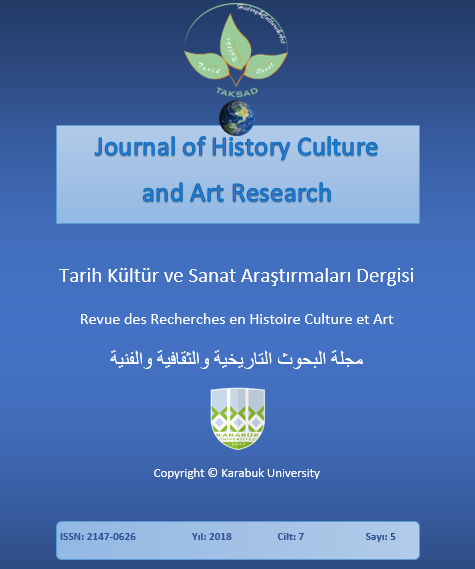Phonocadencies in Epic Genres: Toyuk and Olonkho
DOI:
https://doi.org/10.7596/taksad.v7i5.1912Keywords:
Phonocadency, Phonoproclitics, Phonoenclitics, Toyuk, Olonkho, Acoustic parameters, Harmony-melodic archaic, Cliché.Abstract
This article deals with structurally-phonomorphological and typical acoustic phonocadency in Yakut toyuk and olonkho, performed by outstanding artists of folklore and professional storytelling S.A. Zverev and G.G. Kolesov. Experimentally-linguistic analysis was carried out with computer program “Speech Analyzer”.
Phonocadency as a structural part of epic chant has been specific acoustic complex of components of intonation (quantitativeness, tonality and dynamic indicators). It has three kinds of realization in toyuk, olonkho and algys: initial, medial and final in melodic axis. Most often it functions as a phonoproclitic-enclitic component with various vocal modulations in a form of vibrato and kylyhaakh (throaty signs of chant). Initial and medial phonocadencies are less quantitative than final ones. In general, these acoustic indicators serve as more plangent exclamation in epic chants. Factual and relative phonetic characteristics of phonoproclitics, phonomedial and phonoenclitics of S.A. Zverev’s toyuks have typological commonality with epic pieces of art (olonkho, algys) and are etiquette and universal signs, which symbolize the core of Yakut musical culture of oral traditions. Initial and final phonocadencies of Nyurgun Bootur’s songs from Oyunsky’s olonkho are expressed by generating physiological vibrato and various vocal modulations. They demonstrate strength and frequency of vocal timbre and also they reveal epic image of a hero.
References
Alexeev, E. E. (1976). The problems of harmony formation. Moscow: Music.
Alexeeva, G. G. (1994). From folklore to professional music. Yakutsk.
Efimova, L. S. (2003). Algys Sakha (of Yakut people) in the light of traditions of Turk-Mongolian people. Novosibirsk: Nauka.
Gabysheva, L. L. (2009). Folklore text: symbolic mechanisms of oral memory. Novosibirsk: Nauka.
Krovoshapko, G. M. (1969). Yakut music and olonkho. Application to set of records “Nyurgun Bootur, the Swift”.
Novik, E. S. (1994). Archaic beliefs in the light of interpersonal communication. Historic-ethnographic researches into folklore. Moscow: Eastern literature, 110-163.
Oboyukova, V. V. (2016). Gavril Kolesov, the greatest Yakut man that contributed into development of olonkho. Yakutsk: Alaas.
Zhirkov, M. N. (2011). People cannot live without song. Spiritual potential of society in innovative development of Yakutia. Yakutsk: Bichik, 123-138.
Downloads
Published
How to Cite
Issue
Section
License
All papers licensed under Creative Commons 4.0 CC-BY.- Share — copy and redistribute the material in any medium or format
- Adapt — remix, transform, and build upon the material for any purpose, even commercially.
Under the following terms:
Attribution — You must give appropriate credit, provide a link to the license, and indicate if changes were made. You may do so in any reasonable manner, but not in any way that suggests the licensor endorses you or your use.
- No additional restrictions — You may not apply legal terms or technological measures that legally restrict others from doing anything the license permits.







